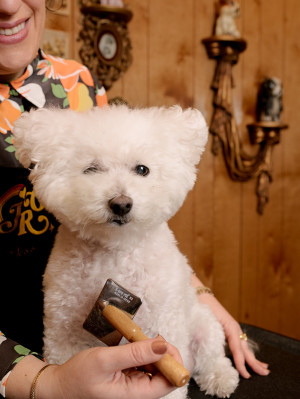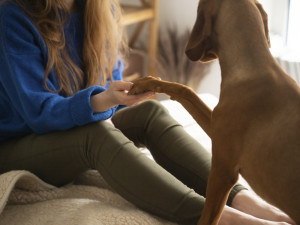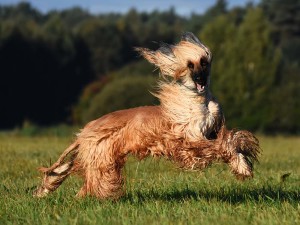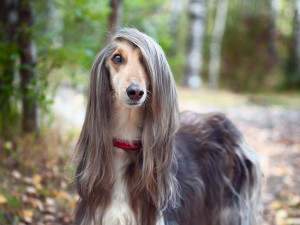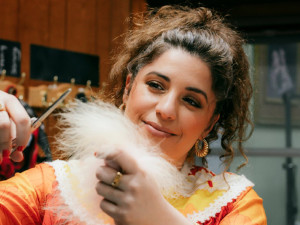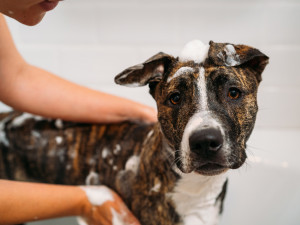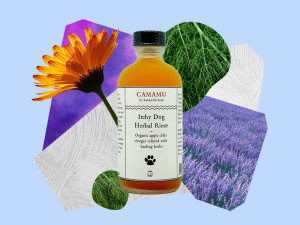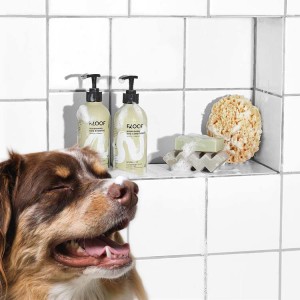How to Groom Your New Puppy
Celebrity dog groomer Jess Rona’s puppy grooming pro tips.
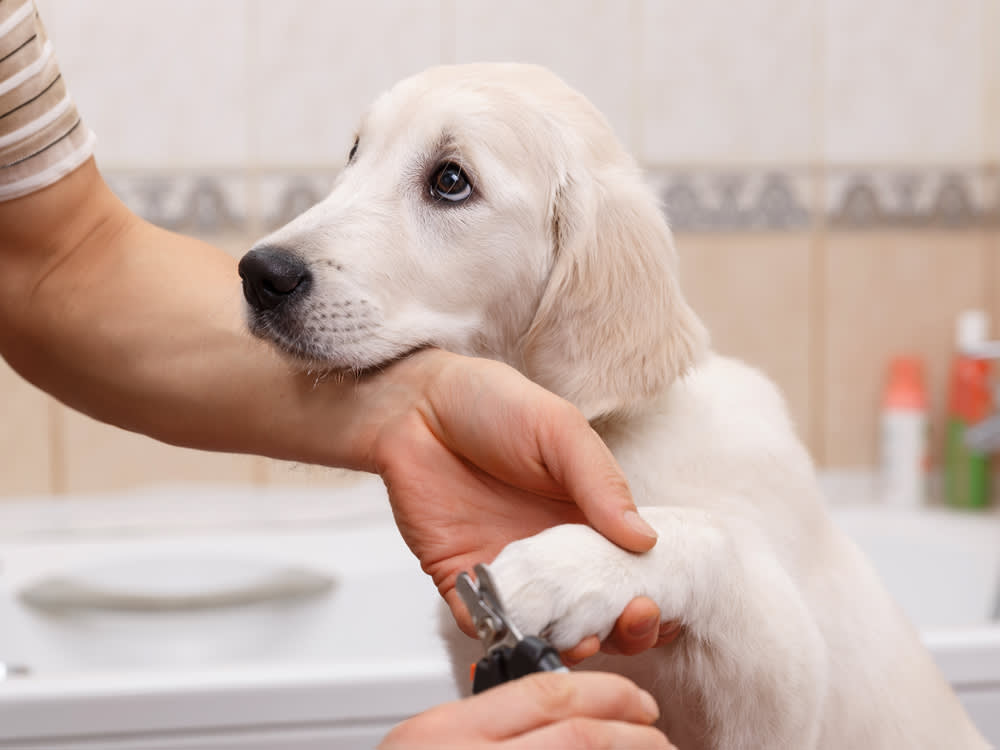
Share Article
So, you have a new puppy. A small, soft bundle of joy and delight and sweetness and frustration, with tiny needle teeth sharper than any object known to any human being. No matter what breed or mix your puppy is, grooming is (hopefully) about to become a big part of their life. So, how do you set this little one up for success? How do you teach them that grooming is a regular, pleasant part of life, and not a terrifying ordeal to which they must periodically be subjected?
“There are times when dogs freak out if they have never been to a groomer,” says Jess Rona of Jess Rona Groomingopens in new tab in Los Angeles. “They pee on the table, they panic, they scream. It’s so stressful for them, and it could have been prevented by an owner taking them to get groomed sooner.” The celebrity dog groomer laid out some crucial tips to help familiarize your puppy with the grooming process.
Why is grooming important for puppies?
Giving your puppy a haircut doesn’t just look cute — it’s crucial to their health. Not grooming your dog regularly can lead to serious health consequences, notes the ASPCAopens in new tab. The reason: Groomers can discover health issues like skin conditions, cysts, and ear infections, which may be hiding under your pup’s fur.
When should I start grooming my puppy?
If you’re wondering when puppies should get their first haircut, Rona recommends that your puppy get their first grooming before their final set of vaccinations are complete, usually around 16 weeks of age. This way, you can make sure your puppy is at the groomers as soon as their shots are done — and you won’t be cutting your puppy’s hair too soon.

How often should I groom my puppy?
When it comes to how often your dog should be groomed, Rona recommends bringing them in frequently to ensure they start to feel comfortable with the grooming process — roughly twice a month for the first six months, ideally. “And then, maybe a month after your first appointment, that’s when I would do the first haircut. Just so they can really get used to the blow dryer, get used to a new stranger, and just get used to the process,” she suggests.
How can I make grooming a regular part of my puppy’s routine?
To get into a good puppy grooming routine, it’s important to find the right groomer. As Rona puts it: “If you want to set your dog up to love grooming, go to a place where you know the person will be kind and gentle.” You can figure this out through referrals, or by going to a groomer that has windows through which you can watch your pup being groomed — though the latter option isn’t guaranteed. Some groomers don’t encourage pet parents to watch through windows, as their dogs might see them and get agitated.
Rona also suggests making sure you’re the very first appointment of the day. Later in the day, she says, “you’ve got all your dogs in there, and there’s bathing and drying happening, it’s loud, there are dogs running around…It’s the hustle and bustle and chaos.” Mornings, she adds, are usually much quieter, which will make for a calmer and more pleasurable experience for your puppy. It’s also OK to ask the groomer to go slow and gentle. This will help your dog get used to grooming and not fear it, which is especially important when it comes to cutting your puppy’s nails and grooming your puppy’s face.
A key part of normalizing the grooming experience for puppies comes at the end, when you go to pick them up. In all likelihood, they’ll be super excited to see you. They might bark, run around, or try to jump up on you. The best thing you can do in this case, Rona says, is to ignore them until they calm down.
“I had to learn that the hard way with my dog, because she would pee when she got excited,” she adds. “Dogs get overwhelmed, and the excitement can turn into anxiety, and it can sometimes turn into aggression. So, I would say to keep a ‘no big deal’ attitude about the groomer.”
Can I groom my dog at home?
If you have a small, short-haired dog like a Chihuahua, or if bimonthly groomings are out of your budget, you can always groom your puppy at home.
Here are Rona’s dog grooming tips:
Gather your supplies: Rona recommends that, before anything else, you ready all the materials you’ll need, like a warm towel, squeeze-bottles for water and for diluted shampoo, and a sponge. This way, everything is within reach “so you aren’t juggling too much when your dog is all wet and acting like a loon.”
Brush if necessary: If your puppy has a long coat, brush them out before the bath, and then after, once they are 100 percent dry. “If your dog is matted, and you bathe them and don’t work out the mats, the water will tighten them and make them worse,” Rona explains.
Bathe your pup: When everything’s ready, wash your puppy in water that is warm, but not too hot. If they’re afraid of water around their face, Rona recommends using a squeeze-bottle which is more gentle. Additionally, using a sponge soaked in water that you can softly squeeze over the dog’s body and face would also do the trick.
What tools do I need for puppy grooming?
Your best bet is to purchase a dog grooming kit like this oneopens in new tab, which has everything you need: a dog grooming brush (to smooth their fur), a double-sided comb (to get rid of tangles, mats, and fleas), and a trimmer (to cut their small nails).
Puppies thrive on routine, so by grooming them on a regular basis — and making sure the process is always pleasant and positive — you can help set your puppy up for a life of calm and enjoyable grooming experiences.
FAQs (People Also Ask)
1. Are there any specific grooming needs for different puppy breeds?
Short-haired dogs typically have fewer grooming needs than long-haired pups, who may require frequent brushing. Dogs with curly hair need to be brushed weekly to avoid matting.
2. Can grooming help identify potential health issues in puppies?
Yes, dog groomers are often the first to find health issues, such as skin conditions, cysts, and ear infections, which may be hiding under your pup’s fur.
3. What if my puppy resists grooming or becomes anxious?
Try to get the first appointment of the day when things are calmer, and ask the groomer to go slow and be gentle, which will help your puppy be less fearful.
References:

Madeleine Aggeler
Madeleine Aggeler is a freelance journalist and copywriter in Washington, D.C. Previously, she was a writer at New York magazine’s The Cut. She lives with her dog, Cleo, who works primarily as a foot warmer.
Related articles
![Jess Rona grooms a dog's tail.]()
Does a Change of Season Mean a Change of Hairstyle — For Your Dog?
Celebrity dog groomer Jess Rona sets the record straight about “summer cuts.”
![A dog getting a bath]()
How Often Should You Wash Your Dog?
“If your dog is stinky or looks dirty, wash ’em!” Plus more pro tips from LA dog groomer Jess Rona.
![camamu ichy dog cleaner]()
You Have an Itchy Schnauzer to Thank For Camamu’s Calming Dog Rinse
The sustainable dog shampoo is made of diluted vinegar, herbs, and 100 percent compostable materials.
![Three eco-friendly pet grooming products displayed in a collage.]()
11 Eco-Friendly Pet Grooming Products
Package-free brushes, plant-based wipes, certified-organic shampoos, and more.
![A dog poses with Floof dog grooming products and a dollop of shampoo on their nose]()
Floof Takes a Gentle Approach to Your Itchy Dog’s Skincare
Mark your pups’ self-care calendars: The company’s eco-friendly, allergy-friendly products are launching July 17.
![A white dog getting a bath with suds and bubbles everywhere.]()
Where to Groom Your Dog Outside of Your Tiny NYC Bathroom
A new East Village self-serve grooming salon features high-tech automated wash pods that are designed to get your dog in and out of the bath without drama.

